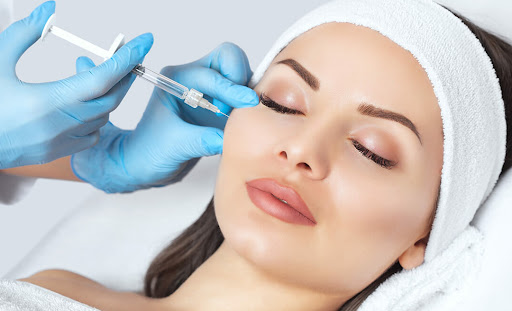The Science Behind Botox Treatment and Its Mechanism
Have you ever wondered how Botox works its magic on our skin, seemingly turning back the hands of time? In this article, we delve into the fascinating science behind Botox treatment and uncover its intricate mechanism. Join us on this journey as we explore the biological processes that make Botox a powerful tool in the realm of cosmetic enhancement and medical treatment.
Understanding Botox: A Brief Overview
Botox in Dubai, short for Botulinum toxin, is a neurotoxic protein produced by the bacterium Clostridium botulinum. While it is notorious for causing botulism, a rare but serious illness, Botox has found widespread use in various medical and cosmetic applications.
Medical Applications of Botox
- Treatment of Neurological Disorders: Botox is commonly employed in the management of neurological conditions such as chronic migraines, cervical dystonia (spasmodic torticollis), and spasticity.
- Management of Hyperhidrosis: Hyperhidrosis, or excessive sweating, can be effectively controlled using Botox injections, which block the signals that stimulate sweat glands.
- Overactive Bladder Treatment: Botox injections can provide relief for individuals suffering from an overactive bladder by relaxing the bladder muscles and reducing urinary incontinence.
Cosmetic Uses of Botox
- Wrinkle Reduction: Botox is renowned for its ability to diminish the appearance of wrinkles and fine lines by temporarily paralyzing the facial muscles responsible for their formation.
- Facial Rejuvenation: By targeting specific facial muscles, Botox injections can create a smoother and more youthful appearance, rejuvenating the skin and restoring confidence.
Mechanism of Action: How Botox Works
Now, let's unravel the mystery behind Botox's remarkable effectiveness. The mechanism of action involves a sophisticated interplay between the neurotoxin and the nervous system, ultimately leading to muscle paralysis and relaxation.
Neurotransmission Interference
Botox exerts its effects by interfering with the release of acetylcholine, a neurotransmitter responsible for transmitting signals between nerve cells and muscles. This disruption in neurotransmission prevents muscle contractions, thereby reducing dynamic wrinkles and preventing the formation of new ones.
Temporary Muscle Paralysis
Upon injection, Botox selectively targets motor nerve terminals, where it binds to specific receptors and inhibits the release of acetylcholine. As a result, the affected muscles experience temporary paralysis, leading to a smoother and more relaxed appearance of the skin.
The Importance of Precision: Art and Science Combined
While the science behind Botox is well-understood, achieving optimal results requires a delicate balance of precision and expertise. Skilled practitioners carefully administer Botox injections, taking into account factors such as muscle anatomy, dosage, and injection technique to ensure natural-looking outcomes.
Precision in Injection Technique
Successful Botox treatment hinges on the precise placement of injections in targeted facial muscles. Practitioners utilize their knowledge of facial anatomy to identify key muscle groups and administer injections with meticulous accuracy, minimizing the risk of side effects and maximizing aesthetic enhancements.
Customized Treatment Plans
Every individual is unique, and so are their aesthetic goals and facial characteristics. Experienced providers tailor Botox treatment plans to suit the specific needs and preferences of each patient, considering factors such as muscle strength, skin elasticity, and desired outcomes.
Safety Considerations and Potential Side Effects
While Botox is generally safe when administered by qualified professionals, it is essential to be aware of potential side effects and safety considerations associated with treatment.
Common Side Effects
- Temporary Bruising: Mild bruising at the injection site is common and typically resolves within a few days.
- Muscle Weakness: Temporary weakness or drooping of adjacent muscles may occur but usually resolves spontaneously.
- Headache: Some individuals may experience mild headaches following Botox injections, which are usually short-lived.
Safety Precautions
To minimize the risk of complications, patients should seek treatment from licensed healthcare providers with extensive experience in administering Botox injections. Additionally, thorough pre-treatment assessments and informed consent discussions are essential to ensure patient safety and satisfaction.
Conclusion:
The science behind Botox treatment is a testament to the remarkable advancements in medical and cosmetic technology. By harnessing the power of neurotoxins and understanding the intricacies of facial anatomy, Botox offers a safe and effective solution for addressing various aesthetic concerns and medical conditions. As we continue to unravel the mysteries of Botox, one thing remains clear – its ability to empower individuals and enhance their confidence is truly transformative.
Want to Read more about this !
The Evolution of Botox Treatment




Comments
Post a Comment